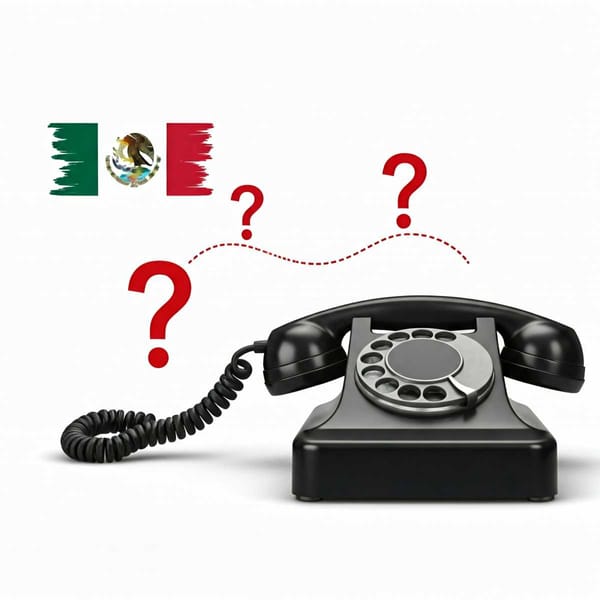The Chronicles of Mesoamerica's Hidden Flora
UNAM researchers embark on a quest to uncover the lost stories of Mesoamerica's plant life, revealing mysteries, missing data, and the urgent need to bridge the gaps in our botanical knowledge.

In the lush and vibrant heart of Mesoamerica, where the ancient rainforests and misty cloud forests conceal secrets of untold biodiversity, a peculiar journey unfolds—a journey to resurrect the botanical archives of an entire region. As the bustling digital age casts its illuminating beams upon the forgotten flora of this magnificent land, we find ourselves in the midst of a scientific treasure hunt, hunting for answers, connections, and the extraordinary.
An expedition led by intrepid minds at the Institute of Biology (IB) of the UNAM, featuring Santiago Ramirez Barahona, Angela Cuervo Robayo, and Susana Magallón Puebla. Their adventure, recorded in the esteemed journal “New Phytologist,” embarks on a quest to unravel the untold stories of Mesoamerica's plant kingdom.
At its core, their mission is to fill in the gaps in the botanical record. You see, Mesoamerica harbors a bevy of plant species, but much of their stories remain trapped in the obscurity of incomplete data. The dusty drawers of science and the creaking bookshelves of ancient libraries hoard this treasure, but we need to share it with the world. With three million, five hundred seventy-eight thousand, seven hundred seventy-seven records in their hands, detailing the lives of thirty-two thousand five hundred twenty-two plant species, our intrepid trio set out to right this historical wrong.
What they found was nothing short of astounding. There were species missing in action, old records lost to time, and vast chasms in our understanding of Mesoamerica's green giants. To put it simply, Mesoamerica had hotspots of missing plant knowledge. Over a third of this land, bathed in the golden rays of the sun, hid its secrets under the cloak of incomplete data. Less than fifteen percent dared to expose themselves fully to the scrutinizing eyes of science.
But here's the quirk that makes this quest intriguing—it's not just about counting petals and leaves. It's about documenting what's gone and cherishing what's left. Magallón Puebla eloquently captures the essence of their mission: “The work does not allow us to know this because to do so we need to return to the site where the plants were collected and look for them. If they are found, it means that they are still there, but if we search thoroughly and the ecosystem is destroyed, it is possible to say that a species, at least in that place, is no longer there.”
Take, for instance, the story of a plant last seen in 1852 in Veracruz. Armed with curiosity, Ramírez Barahona and his team ventured into the wilderness, only to find that the forests had vanished, and the plant along with them. The forest's epitaph, written in the ink of deforestation, revealed the cruel reality of nature's ever-shifting tapestry.
The data itself wasn't a straightforward story either. From 4.2 million records at the Global Biodiversity Information Facility (GBIF), our intrepid scientists were tasked with purifying it into a mere 32,522 accepted species. But here's the quirk—between 53.5 and 15.8 percent of the original names and occurrence records bore the mark of controversy. Some played coy with nomenclature, others dared to be geographical outliers, and the rest presented data with the elusiveness of smoke.
And so, we're left with a conundrum—an intriguing paradox. Mesoamerica, a region teeming with plant life, houses a treasure trove of knowledge, but it remains a tantalizing enigma. Tools like the World Checklist of Vascular Plants (WCVP) are shedding light on the mysteries, opening up the botanical knowledge vaults for the world to see. In the heart of Mesoamerica, the Institute of Biology has taken up the digital banner, a valiant effort to share the wisdom they've garnered over the years.
However, their efforts, much like the tendrils of an exotic vine, have not spread evenly. Central Mexico boasts the lion's share of botanical knowledge, while regions like Guerrero and the northern hinterlands of the country have meager collections. So, the quest to reveal the green secrets continues, like a puzzle with missing pieces waiting to be found.
In the end, Cuervo Robayo reminds us that accessible digital knowledge is the compass guiding botanical research and conservation efforts. It lights the way to the hidden wonders of Mesoamerica, and yet, for every step forward, we encounter the potholes of incomplete, undigitized, or long-forgotten records, begging us to bridge the gap.
The shortcomings identified are like the creases in an old map, waiting to be unfurled and explored. They don't just hinder our understanding of Mesoamerica's green kingdom; they also thwart our comprehension of how these species dance through time, intertwined with our own anthropogenic influence.
This research isn't just about revealing what's lost; it's about guiding us towards what can still be found. It's an invitation to join the expedition, to uncover the forgotten chapters of Mesoamerica's botanical history, to venture into the heart of the unknown.
As our intrepid trio concluded, this work is a torch that illuminates not just Mexico but the entire region. It beckons to Guatemala, El Salvador, and beyond, showing the path towards completing the puzzle of botanical knowledge.
Mesoamerica, it seems, has whispered its secrets to the wind, and the wind has carried them to our eager ears. Our scientists, these modern-day adventurers, are armed with knowledge, determination, and the spirit of curiosity. They beckon us to join them to uncover the secrets hidden in the heart of Mesoamerica and bring its vibrant plant life to life once more.




